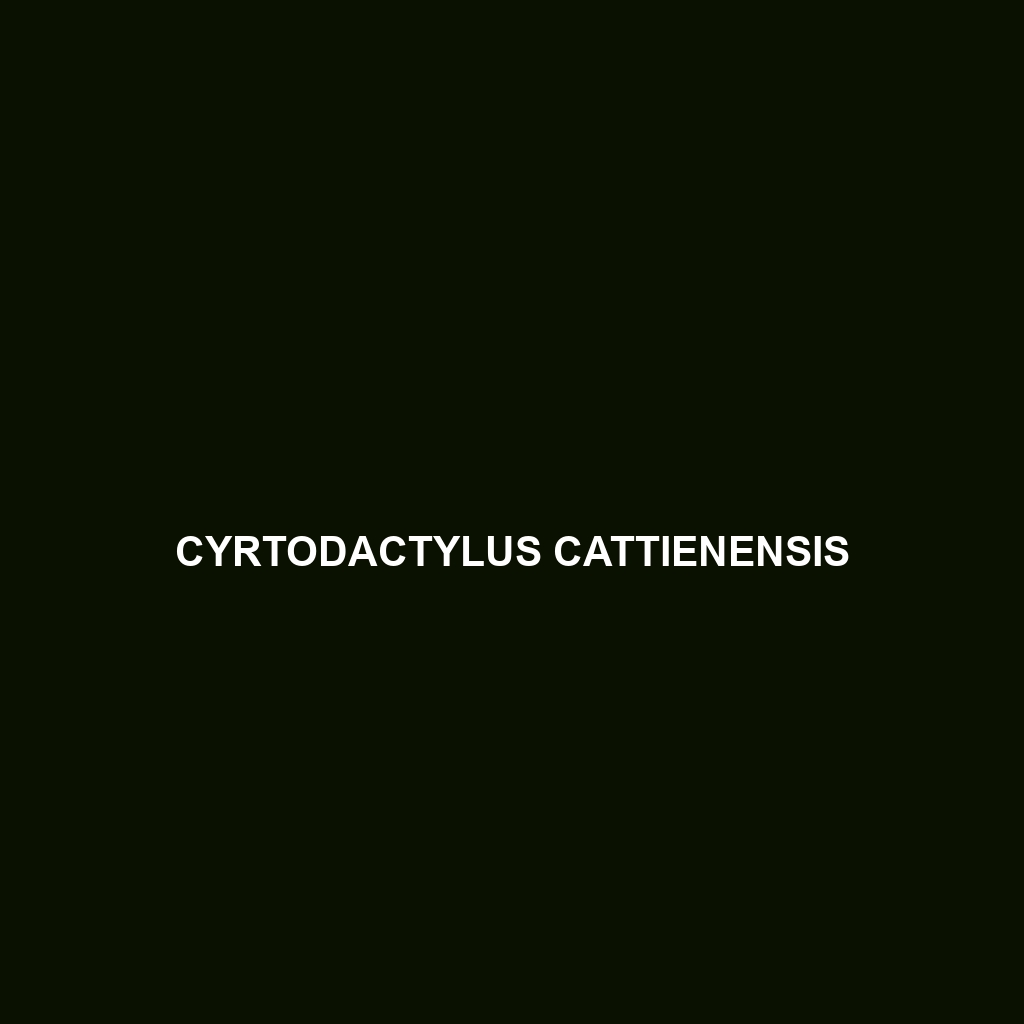Cyrtodactylus cattienensis
Common Name: Cyrtodactylus cattienensis
Scientific Name: Cyrtodactylus cattienensis
Habitat
Cyrtodactylus cattienensis is primarily found in the evergreen forests of southern Vietnam, particularly in the Cát Tiên National Park region. This gecko prefers humid environments with abundant leaf litter and rocky substrates, which provide excellent camouflage and suitable microclimates for thermoregulation. Its distribution has also been noted in nearby lowland areas where similar conditions prevail.
Physical Characteristics
This species reaches an average length of 10 to 15 cm, making it relatively small compared to other members of the Cyrtodactylus genus. Cyrtodactylus cattienensis displays a distinctive coloration, featuring a pattern of light brown with dark brown or black markings that help it blend into its forest surroundings. The skin is smooth, with elongated limbs and a flat body shape, which enhance its climbing abilities and agility in navigating its arboreal habitat.
Behavior
Cyrtodactylus cattienensis is primarily nocturnal, exhibiting most of its activity during the night. It is known for its excellent climbing skills, often found resting on tree trunks or branches. The gecko is also territorial, with males engaging in displays to assert dominance over their area. Vocalizations, such as soft clicks, are used during mating displays and territorial claims.
Diet
The diet of Cyrtodactylus cattienensis consists mainly of small insects and arthropods, including crickets, beetles, and moths. This insectivorous feeding habit is crucial for controlling the population of its prey in the ecosystem. The gecko uses its sharp vision to detect prey from a distance, and its agile hunting skills allow it to capture food efficiently.
Reproduction
Breeding for Cyrtodactylus cattienensis typically occurs during the rainy season when environmental conditions are favorable. Females lay a clutch of 1-2 eggs in hidden locations such as moist leaf litter or small crevices where they remain safe from predators. The incubation period lasts approximately 60 days, after which hatchlings emerge fully formed and capable of independent survival.
Conservation Status
The current conservation status of Cyrtodactylus cattienensis is classified as vulnerable by the IUCN Red List. Habitat loss due to logging and agricultural expansion poses significant threats to its population. Conservation efforts in protected areas are essential to safeguard this unique species’ habitat and ensure its survival.
Interesting Facts
Cyrtodactylus cattienensis is one of several newly discovered species within the Cyrtodactylus genus, showcasing the rich biodiversity of Vietnam. Its unique camouflage and behavior have made it a topic of interest among herpetologists, enhancing our understanding of gecko adaptability in diverse environments.
Role in Ecosystem
The presence of Cyrtodactylus cattienensis plays a vital role in its ecosystem as both a predator and prey. By feeding on insects, it helps maintain the balance of arthropod populations, while also serving as a food source for larger predators. This gecko’s role illustrates the interconnectedness of its habitat and underscores the importance of preserving biodiversity within the Cát Tiên region.
